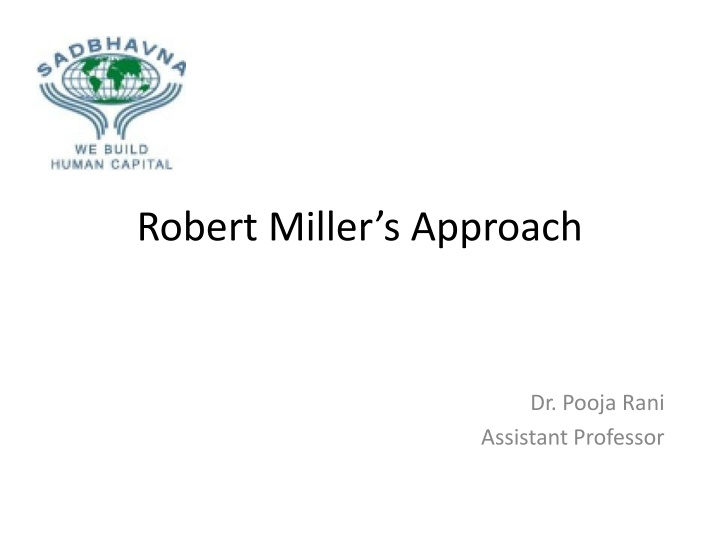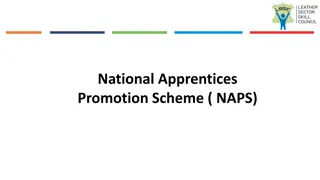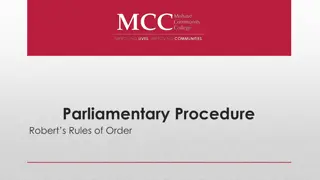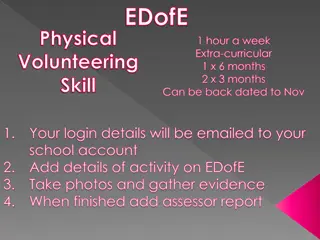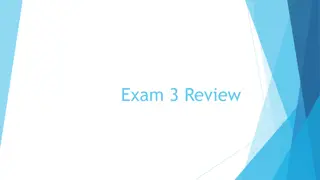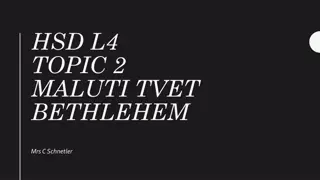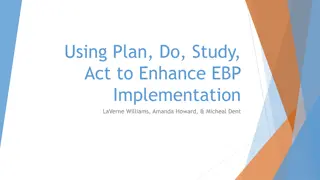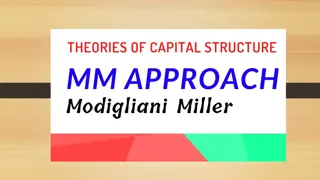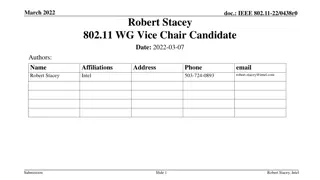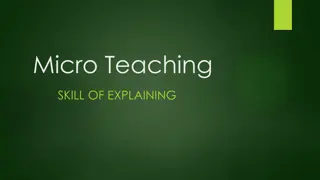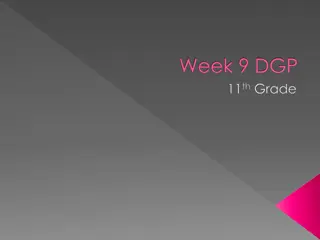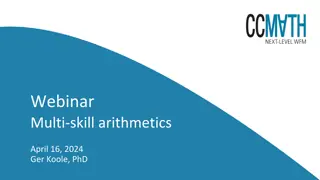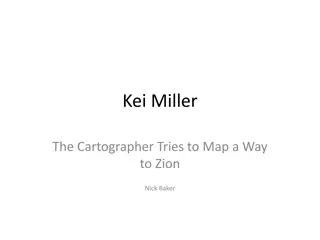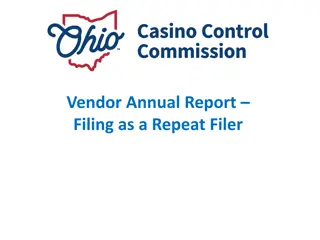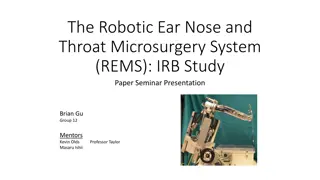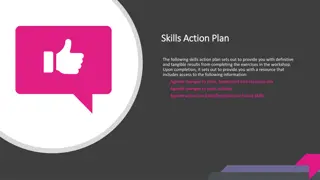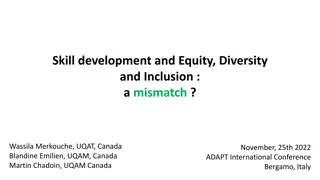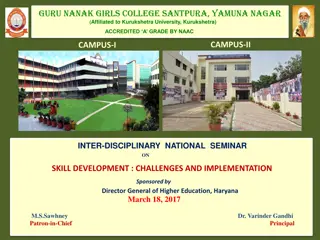Robert Miller's Approach in Skill Development
Robert Miller's approach, originating in military science, emphasizes writing objectives for the psychomotor domain with a focus on skill analysis and physical activities. The method involves three key elements: Indication (Stimulus), Activation (responses), and Feedback. It aims to develop skills and improve performance in activities. However, the approach has limitations as it solely targets psychomotor objectives and places more emphasis on action verbs than the mental processes involved. It is best suited for training objectives rather than teaching objectives.
Download Presentation

Please find below an Image/Link to download the presentation.
The content on the website is provided AS IS for your information and personal use only. It may not be sold, licensed, or shared on other websites without obtaining consent from the author.If you encounter any issues during the download, it is possible that the publisher has removed the file from their server.
You are allowed to download the files provided on this website for personal or commercial use, subject to the condition that they are used lawfully. All files are the property of their respective owners.
The content on the website is provided AS IS for your information and personal use only. It may not be sold, licensed, or shared on other websites without obtaining consent from the author.
E N D
Presentation Transcript
Robert Millers Approach Dr. Pooja Rani Assistant Professor
Introduction Miller in 1962 describes a method for writing the objectives of psychomotor domain. This method has its roots in military science. So, his behavioural objective and more loaded with skill-analysis. Related to the development of skill and physical activities.
There are three main elements according to him: Indication (Stimulus) Activation (responses to be made) Feedback (information of made responses)
Example At the end of the class students will be able to Display different activities Sketch different activities on chart
Reflex Movement is an activity through which relevant indication appear. Physical abilities the control objectives is to be activated. Perceptual abilities the activation to be perceive. Skilled Movement the activation is to be made. Non-discussive communication the indication responses should be adequate feedback.
Limitations It is focus only on psychomotor objective, cognitive and affective objectives can not be written by this approach. It also lays stress on action verb rather than mental process involved in performing action. Training objective can be best written in it rather than teaching objective.
